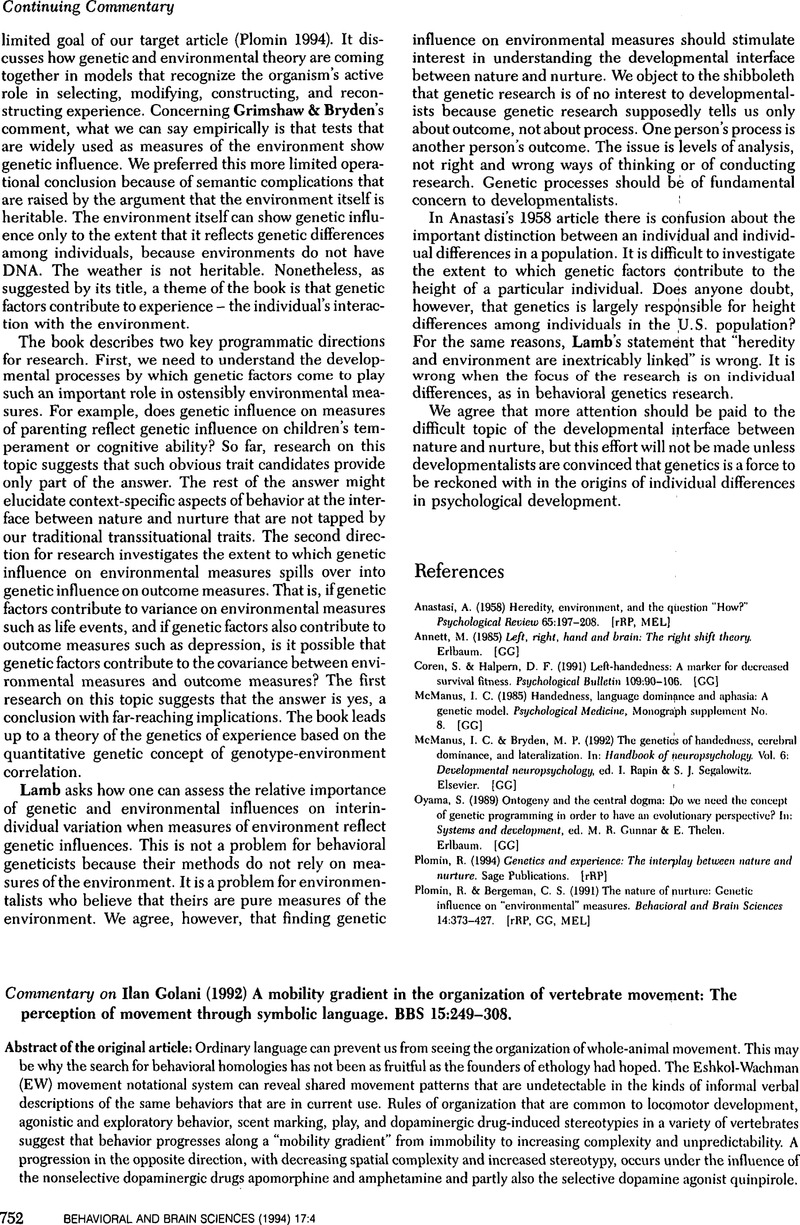Crossref Citations
This article has been cited by the following publications. This list is generated based on data provided by Crossref.
Tchernichovski, Ofer
and
Golani, Ilan
1995.
A phase plane representation of rat exploratory behavior.
Journal of Neuroscience Methods,
Vol. 62,
Issue. 1-2,
p.
21.



